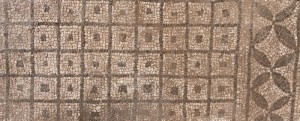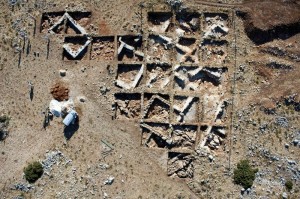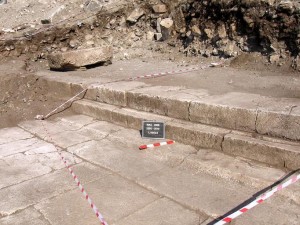During the 2009 excavation season, the archaeobotanical studies at the site continued with extensive sampling of all of the excavated locations in order to get more representative information on the plant economy of the city of Sagalassos and its Iron Age predecessor Tepe Düzen. A total of 75 flotation and 23 wood charcoal samples were […]
Read full post »Depot Management
Thursday, September 17, 2009A professor once said “archaeology is 10 percent digging and 90 percent figuring out what to do with your stuff”. There could not have been more truth in his words, implying that getting it out of the ground is one thing, but studying and storing it yet another. Indeed, as archaeologists we should provide the […]
Read full post »Stone Studies
Wednesday, September 16, 2009
Once again our main goal was to determine the provenance of the stone types used for the wall and floor veneer of Sagalassos. Whereas the wall veneer was the primary subject of research during the previous two seasons, this year special attention was given to the floor revetment. During the campaign of 2008 the opus […]
Read full post »Tepe Düzen: Report 3
Wednesday, September 9, 2009
The excavations at Tepe Düzen were executed by two teams of 2 archaeologists and 3 workmen each. The TD1 team was lead by Merve Özkılıç (Mimar Sinan University, Istanbul) and Roel Van Beeumen (K.U.Leuven) and the TD2 team was lead by Kim Vyncke and Laura Verheyden (both K.U.Leuven). In total 3 sondages and 1 excavation […]
Read full post »The Macellum: Report 2
Tuesday, September 1, 2009
The second half of the excavation campaign at the Macellum yielded some significant results. The northern half of the ca. 20 m wide central courtyard has been uncovered: the limestone pavement, the gutter collecting the rainwater falling from the portico’s roof and the shallow, 0.50 m high staircase supporting the northern colonnade were all found […]
Read full post »

